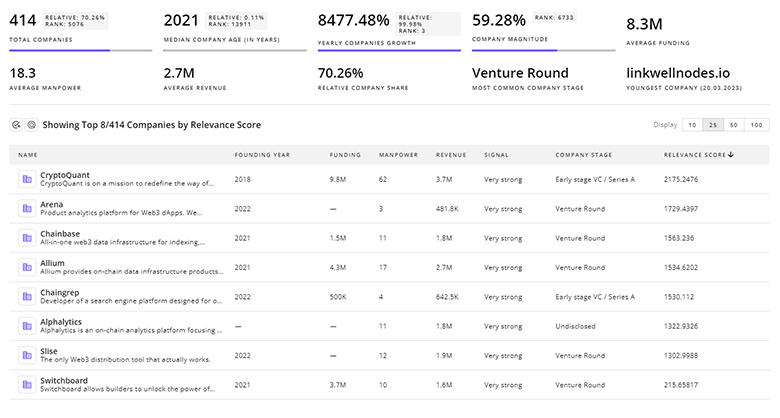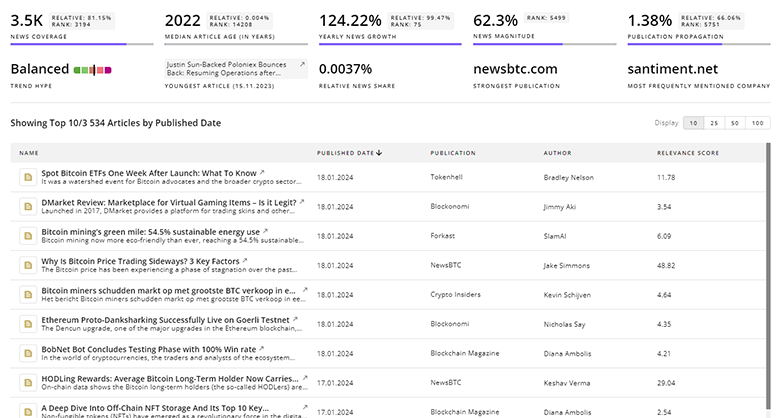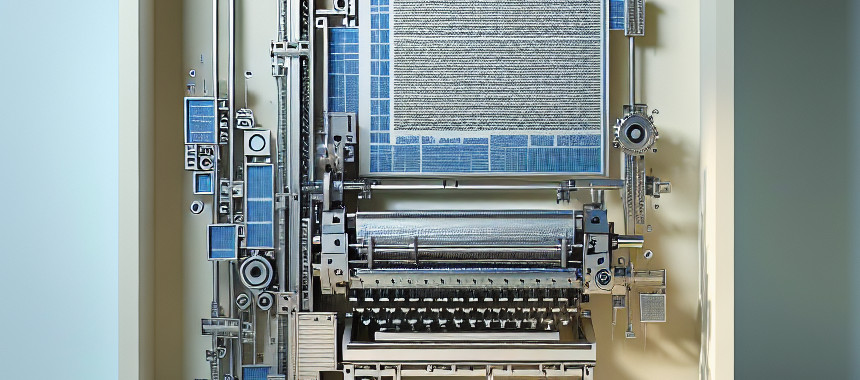
Image Analysis Report
: Analysis on the Market, Trends, and TechnologiesThe image analysis market commands attention: the internal trend data reports a 2024 market size of USD 7.20 billion and an 18.3% CAGR projection toward about USD 19.7 billion by 2030 — a scale that explains the surge of AI projects targeting clinical diagnostics, industrial inspection, and remote sensing Digital Image Processing Market. Growth concentrates where image volumes, regulatory need, and operational pain coincide: medical imaging (demand for faster, reproducible reads), manufacturing (automated defect detection), and geospatial monitoring (cost-effective change detection). Investors have already committed substantial capital to the space (aggregate funding in the landscape exceeds multi-hundred-million levels), which intensifies competition around platform plays and edge-capable model delivery (on-premises and cloud hybrids) AI-based image analysis market.
The last update of this report was 35 days ago. If you spot incomplete or incorrect info, please let us know.
Topic Dominance Index of Image Analysis
The Topic Dominance Index analyzes the time series distribution of published articles, founded companies, and global search data to identify the trajectory of Image Analysis relative to all known Trends and Technologies.
Key Activities and Applications
- Medical diagnostics and workflow automation — automated segmentation, triage/prioritization, and decision support across MRI, CT, ultrasound, and pathology; these tools reduce reporting time and increase reproducibility for tasks such as cardiac chamber segmentation and serial MR change detection AI4MedImaging (cardiac CMR) A.I. Analysis, Inc. (serial MR change detector).
- Industrial quality control and defect detection — inline visual inspection, surface and dimensional analysis, and automated optical inspection for electronics, automotive and packaging lines.
- Geospatial change detection and environmental monitoring — low-cost, large-area anomaly detection using historical and low-resolution imagery to flag sites for higher-resolution follow up Image recognition market overview.
- Content moderation and visual threat detection — automated identification of extremist, sexual or violent imagery and multimedia moderation at scale for platforms and enterprise clients Image Analyzer (visual threat recognition).
- Visual content management and CDN-based image optimization — automated tagging, format conversion, and edge delivery to improve UX and reduce bandwidth for high-volume web platforms.
Significance: these activities map directly to measurable business levers — reduced time-to-report in healthcare, lower scrap and rework in manufacturing, cheaper wide-area monitoring in geospatial use cases, and reduced moderation cost for platforms. Where image throughput and regulatory burden meet, demand for validated, explainable solutions increases.
Emergent Trends and Core Insights
- AI-first model stacks with domain specialization — domain-tuned networks (radiology, histopathology, hyperspectral food inspection) deliver higher clinical or operational utility than generic models; adopters prioritize validated, narrow tasks that yield clear ROI medical image analysis market forecast.
So what: buyers favor targeted modules that can plug into clinical workflows or factory lines rather than monolithic, one-size-fits-all solutions. - Edge and on-premises deployment re-emerging for sensitive and latency-critical applications — hospitals and factories prefer local inference for privacy, reliability, and latency reasons, pushing vendors to support hybrid delivery ultrasound/on-premises preference.
So what: companies that optimize inference for constrained hardware or provide validated on-site stacks will access regulated customers faster. - Multimodal and 3D integration — fusion of modalities (CT + PET, histology + spatial transcriptomics, hyperspectral + RGB) and volumetric analytics enable richer biomarkers and higher diagnostic confidence 3D machine vision market forecast.
So what: multisource fusion increases technical entry barriers but raises the value of winning products by producing novel, clinically actionable outputs. - Regulatory and validation pressure — increasing expectations for clinical evidence, GMLP, and post-market monitoring create higher non-technical costs; vendors must invest in clinical studies and regulatory pathways to scale in healthcare FDA/CE pathways summary (AI in medical imaging reports).
So what: capital-efficient pilots that deliver validated outcome improvements become the gate to large procurement contracts. - Hardware and processing backbone expansion — growth in GPUs, specialized ASICs, and edge SoCs plus rising demand for high-speed image-processing systems supports deployment of more complex models and real-time analytics image processing systems growth industrial machine vision camera market.
So what: companies that co-design software with inference-optimized hardware or offer turnkey edge appliances will differentiate on latency and total cost of ownership.
Technologies and Methodologies
- Deep convolutional networks and task-specific neural architectures — state-of-the-art segmentation, detection, and classification back most production systems in radiology and industrial inspection.
- Transformer and multimodal models for limited-data generalization — vision transformers and multimodal encoders improve performance on cross-device and cross-protocol medical images AI in medical imaging market dynamics.
- Federated and privacy-preserving training workflows — enable collaboration across institutions without raw data exchange, addressing HIPAA/GDPR constraints.
- Hyperspectral imaging and spectral analytics — for food safety, pathology, and precision agriculture, combining spectral bands with ML yields material-specific detection that RGB alone cannot provide.
- Explainable AI and quantitative image-quality assessment — visual attribution maps, metricized image-quality models, and formal performance reporting (IoU, mAP, AUC) become procurement requirements in regulated sectors examples of high-performance segmentation metrics in news findings medical image quality assessment review.
Implication: product roadmaps must balance model accuracy with explainability, deployment footprint, and regulatory evidence to win in medical and industrial buyers.
Image Analysis Funding
A total of 497 Image Analysis companies have received funding.
Overall, Image Analysis companies have raised $8.5B.
Companies within the Image Analysis domain have secured capital from 1.9K funding rounds.
The chart shows the funding trendline of Image Analysis companies over the last 5 years
Image Analysis Companies
- Orama Solutions LLP — a custom computer vision integrator that converts manual inspection workflows into automated defect-detection and surface-inspection systems, emphasizing fast deployment with very small training sets and factory-ready integration. Orama targets manufacturing use cases where line uptime and human inspection cost drive immediate ROI.
- Simularity — provides automated anomaly detection for satellite and aerial imagery by comparing current and historical images to flag changes of interest, enabling governments and enterprises to monitor large regions at a fraction of the cost of continuous high-resolution collection.
- Hinalea Imaging — combines hyperspectral imaging hardware with neural analytics to enable in-line quality assurance (food and industrial products) and medical diagnostics that require spectral discrimination; they emphasize handheld and practical sensors that turn spectral data into actionable classification.
- Percept Pixel — an image CDN and real-time transformation platform that automates format conversion, compression, background removal, and edge delivery for large visual catalogs; it targets e-commerce and media platforms focused on improving page speed and visual discoverability.
TrendFeedr’s Companies tool is an exhaustive resource for in-depth analysis of 2.3K Image Analysis companies.

2.3K Image Analysis Companies
Discover Image Analysis Companies, their Funding, Manpower, Revenues, Stages, and much more
Image Analysis Investors
The TrendFeedr’s investors tool features data on 1.8K investors and funding activities within Image Analysis. This tool makes it easier to analyze complex investment patterns and assess market potential with thorough and up-to-date financial insights.

1.8K Image Analysis Investors
Discover Image Analysis Investors, Funding Rounds, Invested Amounts, and Funding Growth
Image Analysis News
Stay ahead of the curve with Trendfeedr’s News feature. The tool provides access to 4.6K Image Analysis. Navigate the current business landscape with historical and current Image Analysis data at your fingertips.

4.6K Image Analysis News Articles
Discover Latest Image Analysis Articles, News Magnitude, Publication Propagation, Yearly Growth, and Strongest Publications
Executive Summary
Image analysis now sits at the intersection of large image volumes, better models, and concrete business problems. The market sizing and internal indicators show sizable capital and commercial activity in medical, industrial, and geospatial segments, and the winners will combine three capabilities: validated domain models, deployment flexibility that covers edge and secure on-premises contexts, and measurable outcomes that map to buyer economics. Practically, vendors should prioritize modular task wins (diagnostic triage, defect detection, or wide-area change alerts), invest selectively in regulatory or field validation where required, and design inference stacks matched to the operational environment. Buyers should require quantitative performance metrics, test models on their own data, and evaluate total cost of ownership including hardware and validation costs. The current competitive window rewards focused product-market fits and efficient delivery models that translate image insights into operational decisions.
If you’re an expert in trends or emerging tech, we invite you to contribute to our insights.










